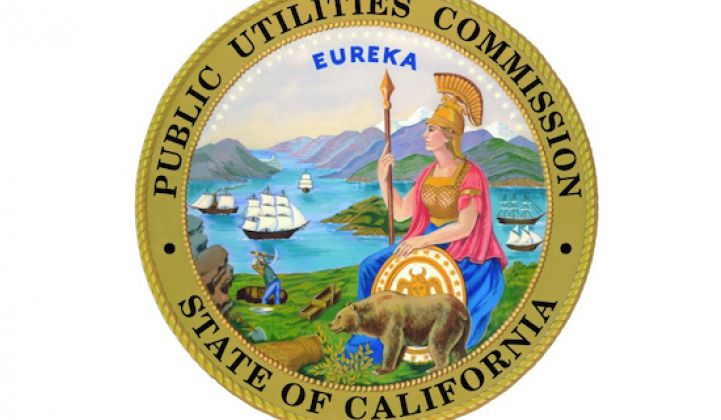After months of contentious debate between solar and storage firms and natural-gas-based energy generators, the California Public Utilities Commission (CPUC) has set a ceiling for emissions that just allows Bloom Energy's fuel cells to continue to participate in the state's $83 million per year Self-Generation Incentive Program (SGIP).
According to Thursday's decision (PDF), the CPUC lowered the emissions ceiling to be eligible for its SGIP subsidy to 334 kilograms of CO2 per megawatt-hour in 2016.
According to fuel-cell company Bloom's data sheet, its first-year average emissions number is 333.4 kilograms of CO2 per megawatt-hour.
Bloom can achieve 333.4. The new ceiling is 334.
As we've suggested, if one were conspiratorially-minded, one might believe that the threshold was set specifically to allow Bloom to participate in the program. Bloom's natural-gas-powered fuel cells have drawn or reserved more than $400 million of the program's 14-year $1.4 billion total, according to a CPUC worksheet.
California's SGIP is a generous subsidy intended to spur development of low-emissions distributed generation with upfront and performance-based incentives for eligible behind-the-meter generation technologies. These include wind, gas turbines, combined heat and power, advanced energy storage, biogas and fuel cells. But the CPUC has had to decide what "low emissions" actually means now that the state has a 50 percent renewable portfolio standard by 2030 -- and apparently, fuel cells still count as "low-emissions."

According to reports, it wouldn't be the first time that the CPUC was open to Bloom's suggestion on policy.
In 2011, PG&E filed a petition asking that the CPUC suspend SGIP payments pending a rule change to better disperse the money across different technologies. According to a 2011 article in the Sacramento Bee, Bloom board member John Doerr of VC firm Kleiner Perkins intervened and called the then head of the CPUC, Michael Peevey. (Peevey stepped down from his post amidst an ethics scandal last year.)
Matthew Vespa, senior attorney at the Sierra Club, had this to say in a statement: “The time to end SGIP’s perverse practice of providing handouts to polluting fossil-fuel dependent technologies is long overdue,” adding, “With the climate crisis growing more acute with each passing day, we simply do not have the luxury of squandering limited incentive funding on counterproductive subsidization of fossil-fueled resources at the expense of the much cleaner technologies. If the Commission is unwilling to significantly lower the emission factor, they should explicitly exclude electric only natural gas fuel cells from SGIP as part of its future considerations of program modifications.”
In August, the California legislature weighed in with a pointed letter directed to CPUC Commissioner Michael Picker that emphasized the intent of SB 861. The letter states, "We are deeply disappointed with your proposed decision, which meets neither the letter nor the spirit of the statute." The letter notes that "the decision appears to be skewed to maintain eligibility for existing technologies operating on 100 percent conventional natural gas," adding, "If your decision is adopted, SGIP will continue the increasingly absurd practice of subsidizing natural gas consumption, supporting existing technologies that have already taken hundreds of millions of dollars from SGIP...without producing substantial efficiency improvements, cost reductions, or general benefits for taxpayers, squandering the $415 million ratepayer investment authorized by SB 861 and undermining our collective efforts to clean the grid and transition away from fossil fuels."
As we've reported, this decision determines the grid-edge technology mix funded by $300 million of California ratepayer cash over the next few years. The decision also reveals the leanings of the current CPUC leadership.



